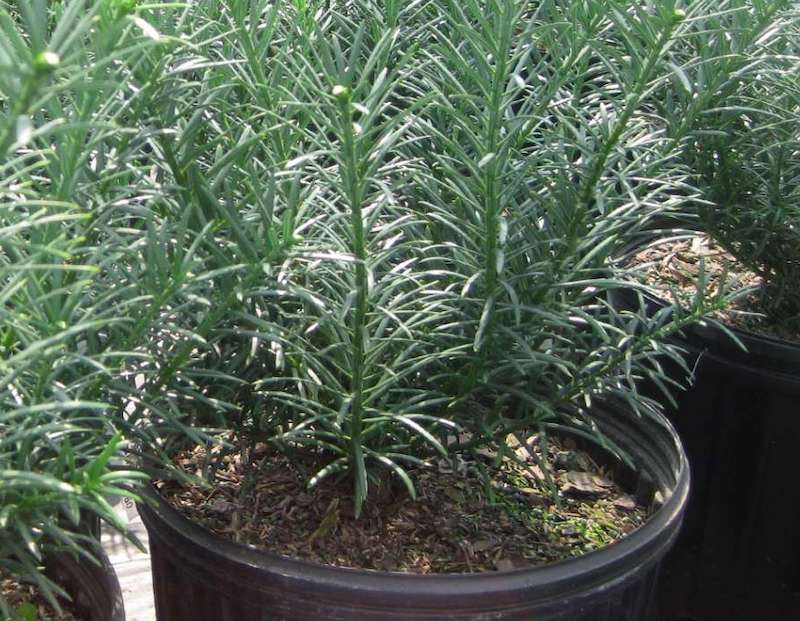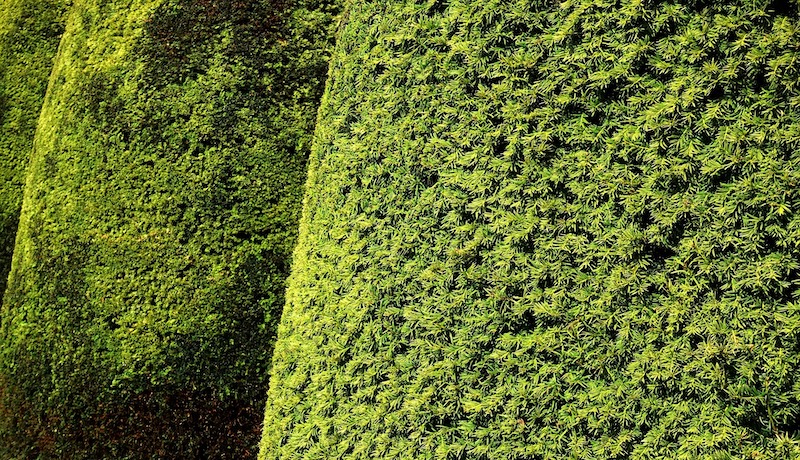Yews are uniquely qualified among evergreens to be used as container specimens because of their ability to thrive in shady conditions and tolerate pruning. Yews are also an option for topiary because they can withstand shearing and grow from latent buds on woody stems. As shrubs or trees, the key is to choose a sufficiently large container for the yews. Often the balance is between finding a container large enough for a healthy yew but small enough to handle, as the gardener may need to move the yew to a sheltered site in winter. Choosing a cultivar of yew that stays naturally compact or has the preferred form is also key.

Planting Yews in Pots
The best time of year to plant a yew in a container is early spring, followed by early fall. It is possible at other times, but yews planted in the heat of summer will require extra watering. Choose a container with plenty of drain holes.The container should be a few inches wider than the container the yew was purchased in and at least 18 inches deep. The best container material will depend on several factors. Terra cotta, for example, may have an attractive appearance but yews will dry out faster and may be difficult to move around. Some growers will opt for lightweight pots made of foam or plastic and paint them regularly to keep them attractive. After several years of growth and occasional repotting, plan to eventually keep the yew in a container about 3 feet wide.

Best Soil For Yews in Pots
The best potting soil for container-grown yews is a good quality, well-drained bagged soil intended for container growing. Experienced growers with components of potting soil on hand can make a homemade potting mix using peat moss, compost or processed softwood bark, and perlite. Avoid bagged, commercial soil mixes that have fertilizers added to them. Rotted compost or other organic matter already in the soil will provide all the nutrition the tender yew roots need for several weeks or months.
Caring For Yews in Planters
Yews in planters are cared for much in the same way that their in-ground counterparts, but generally require more frequent attention. Because the roots of the yew are more exposed to wind and temperature fluctuations while having less room to branch out and take up water, they will require more frequent irrigation when in a container. Annual fertilization is also important, as is winter care.

Watering Yews in Pots
Yews are drought tolerant but benefit from regular soil moisture. Yews kept in containers will typically require more frequent watering than their in-ground counterparts. The best way to gauge how frequently watering is necessary is to regularly feel the potting soil in the container. Whenever the soil a few inches below the surface feels dry to the touch, the yew will be ready to water. Water the plant slowly and deeply with each irrigation, so that water comes out from the drain holes. Yews kept in shade and out of drying winds will require less frequent irrigation.
Fertilizing Yews in Pots
Yews kept in containers will likely require more regular fertilizer applications than their in-ground counterparts. Established plants in the landscape can often go years without a supplemental fertilizer application; however regular watering of containers will leach feed out of the pot. Plan to apply a balanced, slow-release fertilizer annually each spring according to label directions.
Winter Care For Yews in Pots
Yews kept in pots over winter will typically require extra protection. Yews in general are prone to winter burn, or loss of moisture through needles that the plant is unable to make up for with root absorption. Moving the container or providing a shelter so the yew is out of the wind will minimize moisture loss. It is also possible to relocate the yew to an unheated garage or shed.
Extra protection for the roots and container is also necessary. Because the roots are above ground, they lack the temperature buffering of the soil. Partially burying the yew container, banking mulch or soil around it, or bringing it into an unheated garage are ways to keep the roots from extreme, damaging cold. Deer also find yews appealing and may use them as a food source in winter. Where deer are present in the landscape, put up a physical barrier or regularly apply a repellent to protect yews.
Growing Yews Indoors
It is not recommended to bring yews indoors as a houseplant year-round, as this plant is adapted to the cold and undergoes a period of winter dormancy. The best option for overwintering a yew in a container is to put it in a protected spot out of wind, storms, and extreme colds, and monitor the moisture level in the container soil.
 |
Author Angela Ryczkowski - Published 4-10-2023 |
